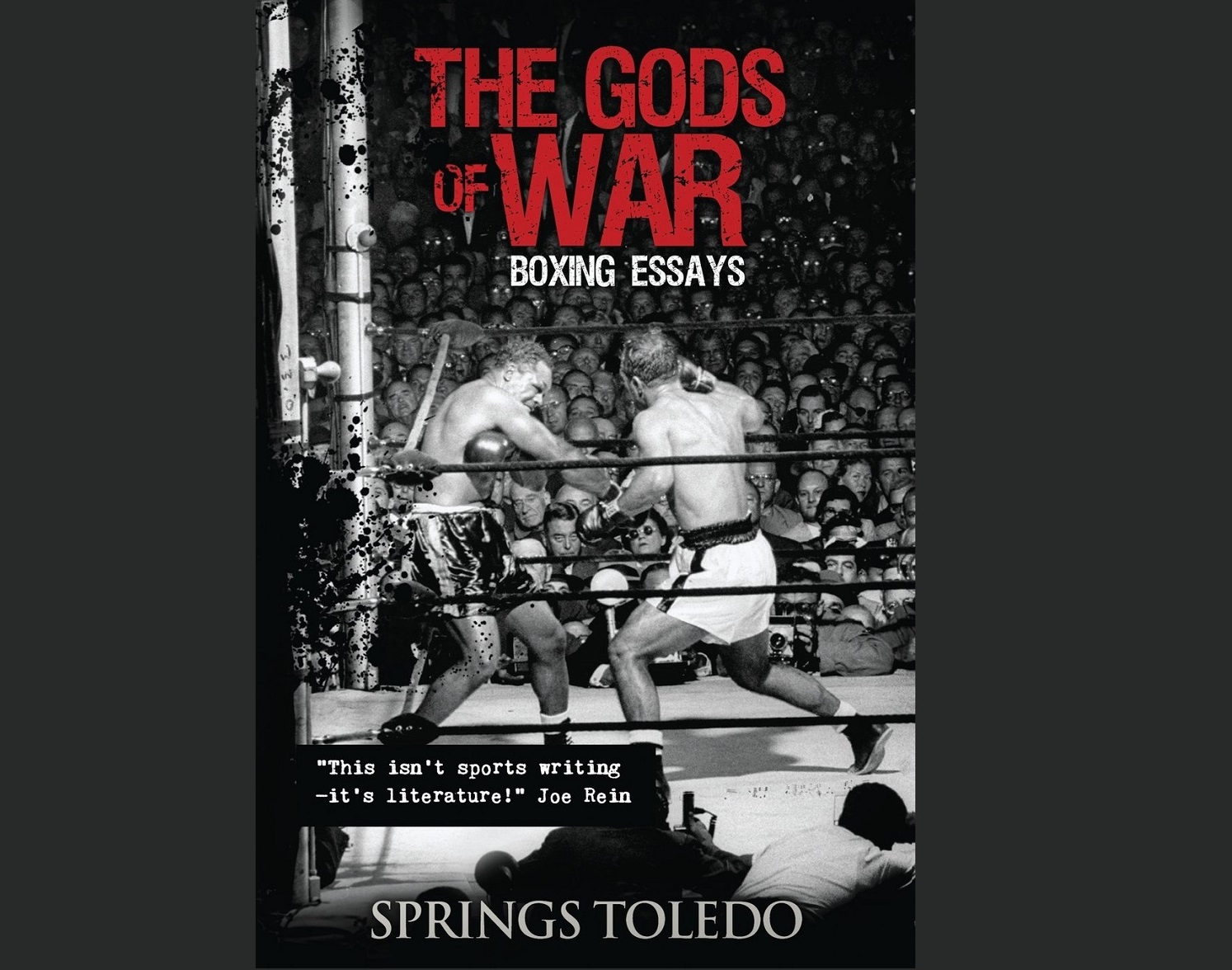Book Review
Book Review THE GODS OF WAR by Springs Toledo

Book Review THE GODS OF WAR In “The Gods of War,” author Springs Toledo takes boxing writing to a level beyond boxing writing, and to a level of literature not seen in a piece on the sport of pugilism since Norman Mailer’s “The Fight,” published back in 1975. Boxing is historically and even currently most often written about by people who are “documenting” the sport and what they see. From Nat Fleischer, who founded “The RING” to modern day historian and author S.L Compton, this type of writing gives the sport a rich and valuable history, but the difference lies in that Toledo is a wordsmith, an excellent writer who is capturing much of the raw emotion around the sport of boxing in his work in an enjoyable, readable and intuitive way.
Toledo has since published “In The Cheap Seats” and that book, written in a similar “essay” delivery, has also received critical acclaim. If you enjoyed “In The Cheap Seats” but haven’t yet read Toledo’s earlier work, then you owe it to yourself to pick up his 2014 tome “The Gods of War.” You will not be disappointed.
Toledo is becoming known for his work in the history of boxing. It is the combination of his depth of knowledge and ability to write that sets the book apart. What Toledo is advancing here is basically his top 10 fighters of all-time. His list ranges from Willie Pep to Charley Burley to Mickey Walker to Sugar Ray Robinson before settling on the great Harry Greb. How he takes you there is well worth the read.
You can check out a “trailer” for the book on Youtube for a better taste:
Biographical, Published in 2014 by Tora Book Publishing. 181 pages. Available at AMAZON.COM.
Book Review THE GODS OF WAR / Check out more boxing news and videos at The Boxing Channel.
-

 Featured Articles3 weeks ago
Featured Articles3 weeks agoAvila Perspective, Chap. 330: Matchroom in New York plus the Latest on Canelo-Crawford
-

 Featured Articles1 week ago
Featured Articles1 week agoVito Mielnicki Jr Whitewashes Kamil Gardzielik Before the Home Folks in Newark
-

 Featured Articles4 weeks ago
Featured Articles4 weeks agoAvila Perspective, Chap 329: Pacquiao is Back, Fabio in England and More
-

 Featured Articles3 weeks ago
Featured Articles3 weeks agoOpetaia and Nakatani Crush Overmatched Foes, Capping Off a Wild Boxing Weekend
-

 Featured Articles2 weeks ago
Featured Articles2 weeks agoCatching Up with Clay Moyle Who Talks About His Massive Collection of Boxing Books
-

 Featured Articles3 weeks ago
Featured Articles3 weeks agoFabio Wardley Comes from Behind to KO Justis Huni
-

 Featured Articles1 week ago
Featured Articles1 week agoMore Medals for Hawaii’s Patricio Family at the USA Boxing Summer Festival
-

 Featured Articles4 weeks ago
Featured Articles4 weeks agoDelving into ‘Hoopla’ with Notes on Books by George Plimpton and Joyce Carol Oates















